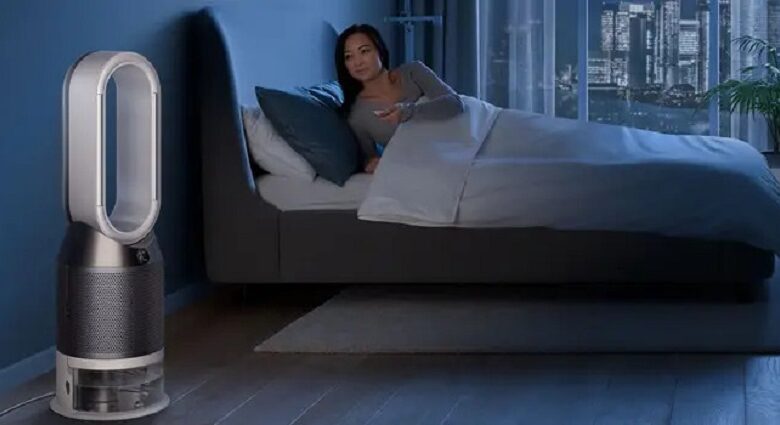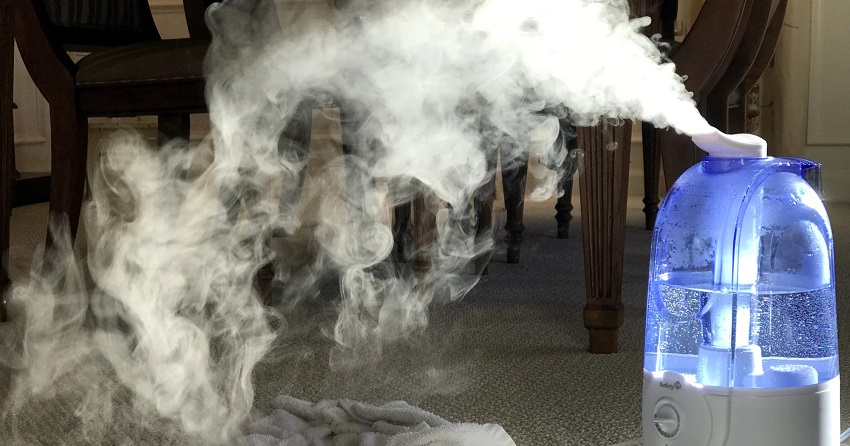Is it Safe to Run a Humidifier While Sleeping?

Imagine snuggling into your bed after a long, tiring day. As you drift off to sleep, you hear a soft hum in the background and feel a gentle mist surrounding you. This is the soothing experience that a humidifier can provide. However, many wonders if running a humidifier while sleeping is safe. In this article, we will explore the benefits, potential risks, and guidelines for using a humidifier in your bedroom overnight. This content is provided by https://celb.org/
Benefits of Using a Humidifier While Sleeping
Alleviates Dryness
One of the primary reasons people use humidifiers is to combat dryness. Dry air can cause discomfort, such as dry skin, chapped lips, and irritated nasal passages. By adding moisture to the air, a humidifier can help alleviate these symptoms, making your sleep environment more comfortable. Explore humidifier for sleep apnea.
Eases Congestion
A humidifier can be beneficial if you often wake up with a stuffy nose or find it hard to breathe at night. The moist air produced by the humidifier can help relieve nasal congestion, allowing you to breathe more easily and promoting better sleep.
Prevents Snoring
Dry air can contribute to snoring by drying out the throat and nasal passages, leading to increased congestion and vibrations. By adding moisture to the air, a humidifier can help reduce snoring and improve the quality of your sleep.
Promotes Skin Health
Humidifiers can also benefit your skin. Dry air can strip your skin of moisture, leading to dryness, itchiness, and dullness. A humidifier while sleeping can help maintain optimal skin hydration, leaving your skin feeling soft, supple, and rejuvenated.
Risks and Precautions
While running a humidifier while sleeping can offer numerous benefits, it’s essential to be aware of potential risks and take necessary precautions.
Excessive Humidity
Excessive humidity in your bedroom can create an environment conducive to mold and mildew growth. To prevent this, it’s crucial to maintain an optimal humidity level. The Environmental Protection Agency (EPA) recommends keeping indoor humidity between 30% and 50%. Use a hygrometer to monitor humidity levels and adjust your humidifier settings accordingly.
Cleanliness and Maintenance
Proper maintenance of your humidifier is vital to ensure its safe operation. Stagnant water in the humidifier’s reservoir can become a breeding ground for bacteria and mold, which can then be released into the air. Regularly clean and disinfect your humidifier according to the manufacturer’s instructions to prevent microbial contamination.
Noise and Disturbance
Some humidifiers can produce noise, which may disturb your sleep. If you are a light sleeper, consider choosing a humidifier with a low noise level or using white noise machines to mask disruptive sounds.
Allergies and Asthma
While a humidifier can relieve certain respiratory conditions, it may worsen symptoms for others. People with allergies or asthma should consult their healthcare provider before using a humidifier, as excessive humidity can trigger asthma attacks or promote the growth of allergens.
Guidelines for Using a Humidifier Safely
To ensure the safe and effective use of a humidifier while sleeping, follow these guidelines:
- Choose the right size: Select a humidifier that is appropriate for the size of your bedroom. Too small, and it may not provide adequate moisture; too large, which could create excessive humidity levels.
- Use distilled or demineralized water: These types of water help minimize mineral buildup and reduce the release of white dust particles into the air. Tap water contains minerals that can be dispersed into the air and settle as fine dust.
- Position the humidifier correctly: Place the humidifier on a flat, elevated surface, away from walls or furniture, to ensure proper airflow and avoid condensation buildup.
- Clean and maintain regularly: Clean the humidifier at least once a week, following the manufacturer’s instructions. Empty the water tank, rinse it thoroughly, and disinfect it to prevent bacteria or mold growth.
- Monitor humidity levels: Use a hygrometer to measure the humidity in your bedroom. Aim for a humidity level between 30% and 50%. Adjust the humidifier settings accordingly to maintain a comfortable and healthy environment.
Conclusion
Running a humidifier while sleeping can provide numerous benefits, such as alleviating dryness, easing congestion, preventing snoring, and promoting skin health. However, using a humidifier safely and taking necessary precautions to avoid excessive humidity, maintain cleanliness, and prevent potential risks is important. By following the guidelines mentioned in this article, you can enjoy the soothing effects of a humidifier and wake up refreshed each morning.
FAQs (Frequently Asked Questions)
Can I leave the humidifier on all night while I sleep?
It is generally safe to leave the humidifier on throughout the night. However, ensure that you maintain an optimal humidity level and follow the manufacturer’s instructions for safe operation.
Can a humidifier make the air too moist?
Yes, running a humidifier for an extended period without monitoring humidity levels can create excessive moisture in the air. Maintain a 30% and 50% humidity to prevent mold growth.
Can a humidifier cause allergies or asthma symptoms to worsen?
While a humidifier can help relieve symptoms for some individuals, it may worsen allergies or asthma in others. Consult your healthcare provider if you have respiratory conditions before using a humidifier.
How often should I clean my humidifier?
It is recommended to clean your humidifier at least once a week. Regular maintenance helps prevent the growth of bacteria and mold, ensuring safe and efficient operation.
Is it necessary to use distilled water in a humidifier?
While distilled or demineralized water is recommended to minimize mineral buildup and white dust particles, tap water is generally acceptable if your area has low mineral content. Check your humidifier’s manual for specific guidelines.




